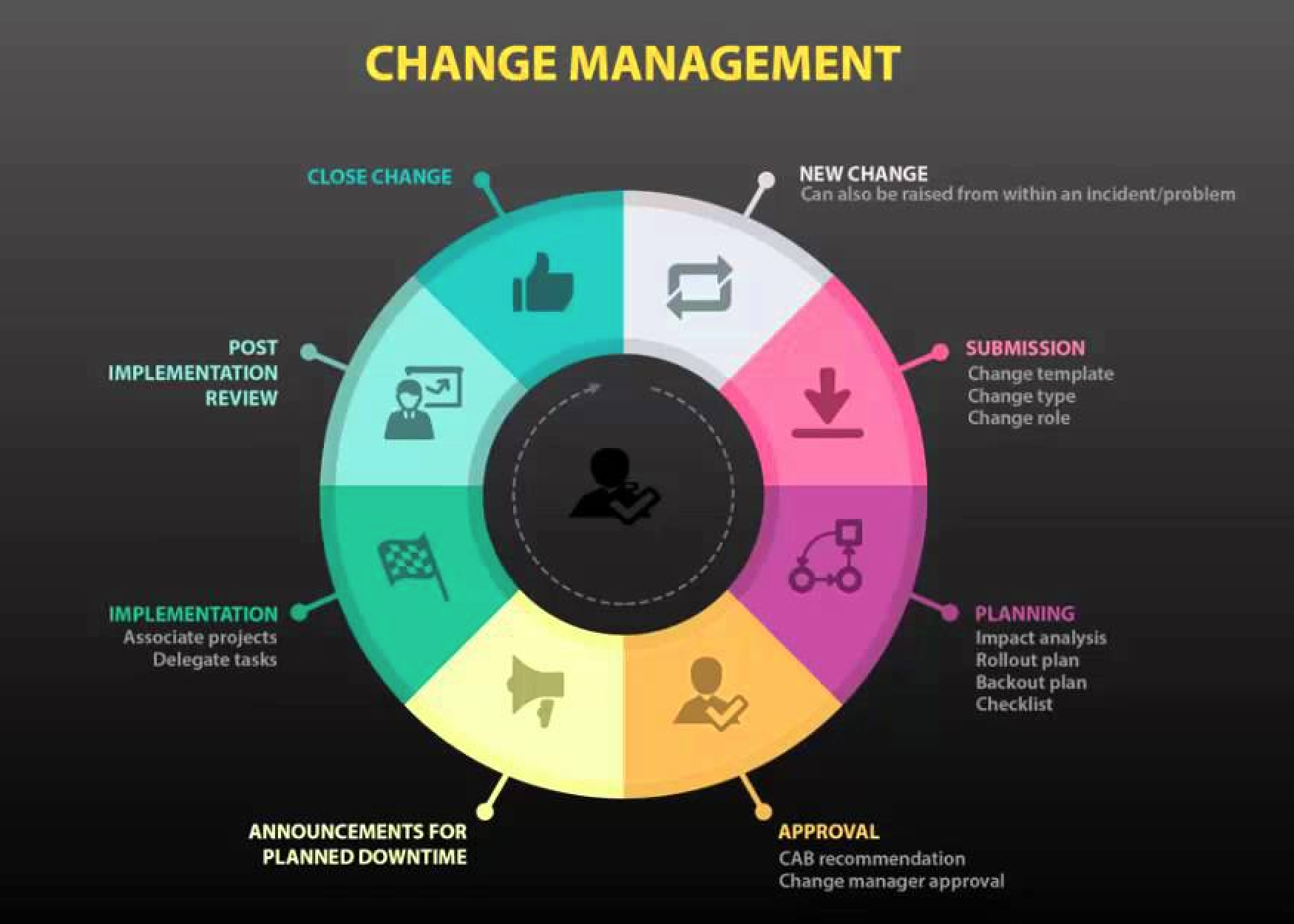[Blog] Do you think Change management is important? Why or why not?
Change management is an imperative ITIL process as it helps organizations foresee the benefits even before implementation.
This process is responsible for assessing overall impacts, planning, and approvals for the implementation of changes and ensuring minimal disruptions during the transition.
Lately, organizations see change management plays an important role during the implementation of new technology. Change management has become a formal way of communicating with their users to tell them why change is happening, what it will look like for them, and how it will ultimately benefit them in the end.
Having the users informed from the beginning helps smooth the transition and shortens the duration of successful implementation. Also, it makes the users more engaged in the process of making it happen, in turn, saves the organization's time and resources.

Key Takeaways:
- Change management process flow is a simple six-step process. Submit a request for change, plan it, send it for approval, implement, review, and close the request.
- Helps to implement a change in a pro-active approach by analyzing both the positive and negative impacts, pre-planning the back-out plan and roll-out the change in a phased manner.
- Define workflows to automate manual processes and activities such as triggering recommendation mails to the change advisory board (CAB) and approval from the change approver/manager.
- Make an announcement to keep your users informed about the change implementation and downtime.
- Make a checklist listing the essential steps to be completed in order to verify whether the change implementation is completed.
- Review the change and ensure that it is ready for release.
- Once released, close the change after the concerned approval.
Having a strategy in place, you set a standard. Setting a standard for changes early on and maintaining consistency can help to implement them in a simplistic approach.
We would love to hear your experiences in adopting the change management in your organization. Cheers..!
Topic Participants
Dinesh Bhaskaran
New to M365 Manager Plus?
New to M365 Manager Plus?
New to RecoveryManager Plus?
New to RecoveryManager Plus?
New to Exchange Reporter Plus?
New to Exchange Reporter Plus?
New to SharePoint Manager Plus?
New to SharePoint Manager Plus?
New to ADManager Plus?